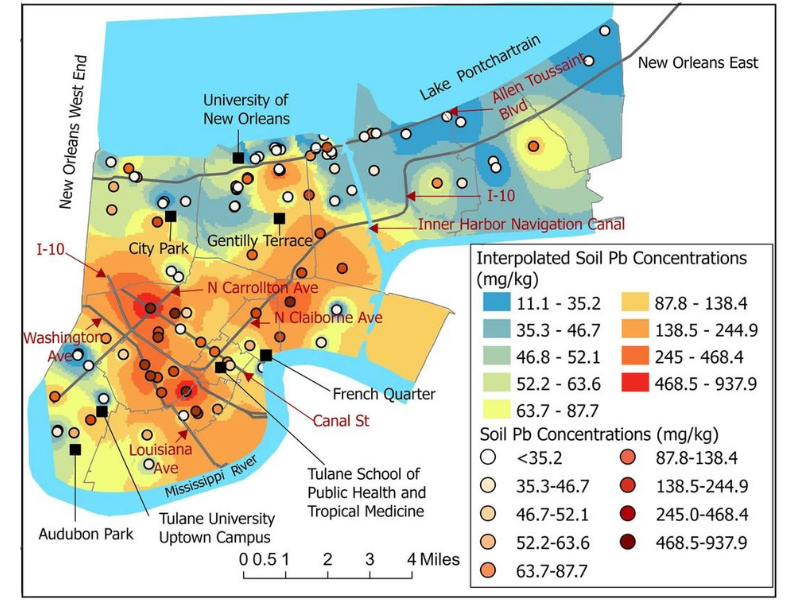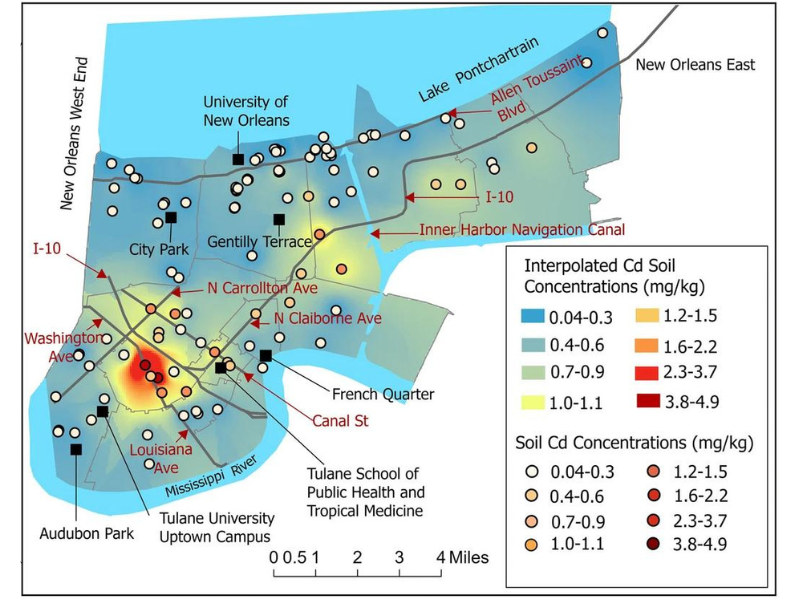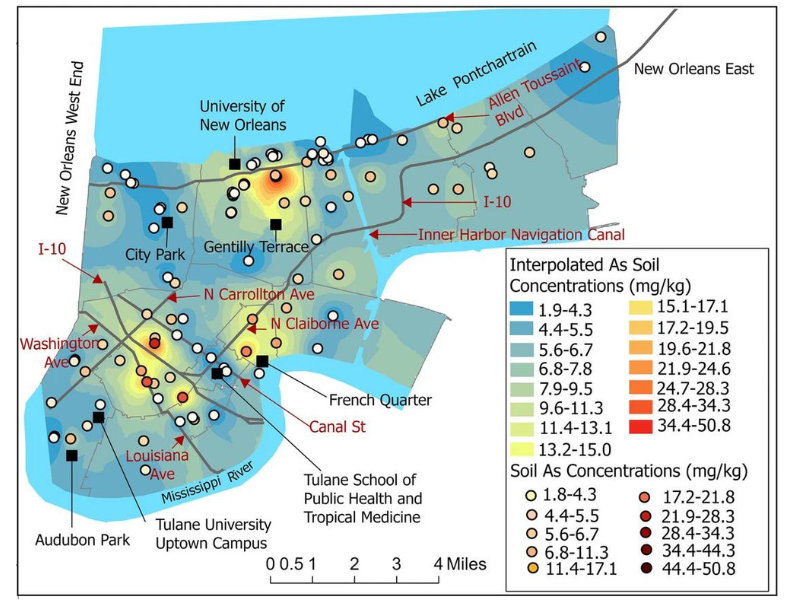Study: Lead contamination in the soils of New Orleans has decreased, but certain hot spots remain

A recently published Tulane School of Public Health and Tropical Medicine study has shed renewed light on the presence of lead and other elements in soils in the New Orleans metro area.
It was widely reported in several studies that lead levels in New Orleans dropped after Hurricane Katrina, with a Tulane study backing those findings released in 2016.
Now, seven years later, a team of researchers from SPHTM has conducted an even wider survey of local soil, and their findings provide additional insight.
“Occurrence and Spatial Distribution of Lead, Arsenic, Cadmium, and Uranium in Soils of Southern Louisiana,” published recently in Water, Air, & Soil Pollution, outlines the results of a study funded by Louisiana Clinical and Translational Science Center (LA CaTS).
The study found higher levels of lead in the Mid-City, Central City, and St. Roch neighborhoods of New Orleans. Higher lead levels were found along busy streets and are thought to remobilize from historic leaded gasoline or lead from old housing.
Three samples taken from playgrounds (along with two more from roadsides) exceeded the USEPA’s regulatory Pb level of 400mg/kg in residential soil. Many more samples were also found exceeding the more conservative risk-based screening level of 100mg/kg of lead used in European countries.

Higher levels of cadmium were identified in Marlyville-Fontainebleau and Broadmoor. Elevated levels of arsenic were found in Mid-City, Central City, Milneburg, and St. Roch. Uranium levels above the Louisiana background concentrations of 2.4 mg/kg within the study area were found in topsoils near sugarcane plantation farms and a fertilizer processing plant along the Mississippi River.
As Dr. Tewodros Rango Godebo, assistant professor in the Department of Environmental Health Sciences and co-author of the study explains, the lead level in soils must be regularly monitored.
“Lead is particularly relevant as it persists in the soils of the inner cities and can put children at risk from hand to mouth exposure, or from air particulates in dry and windy periods,” Godebo said. “We expect that those identified hot spot areas can expose residents, especially children, to elevated levels of lead that can be monitored in biospecimens (such as blood or bone).”
Yet the findings weren’t exclusively grim, as lead levels lower than the European standard were observed in New Orleans East, Uptown, Audubon Park, City Park, Pontchartrain Park, and Fillmore.
The study even revealed a general trend that the lead content in New Orleans soil is lower than both pre and post Katrina levels. And that development makes future mitigation efforts easier to focalize.
“[We] mapped hot spot areas of metals in soils of New Orleans and the surrounding areas. This would be of interest to the local residents, especially children in these regions that may be at risks of exposure,” Godebo said. “The hot spot sites can be targeted for mitigation efforts to reduce their levels in the soil, and for routine assessment of health risks to protect the public.”
The lead author of the study, Dr. Syprose Nyachoti, was a postdoctoral researcher with Dr. Godebo and is now a research scientist at the California Department of Toxic Substances Control.

